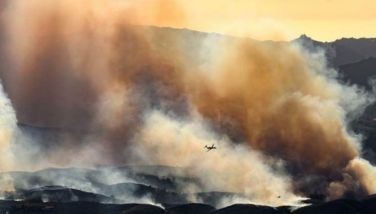Fireworks smoke inhalation
CEBU, Philippines – The New Year's fireworks and firecrackers explosions have sent many victims to the hospital. As the patients may have been sent home already, to continue recuperation in the care of their families, it might be mistaken that their cases are slight. But caring for these patients at home shall be carried seriously.
The website www.emedicinehealth.com advises that once the patient leaves the hospital, prescribed follow-up care shall be strictly followed. Certain facts are worth bearing in mind:
• Medications may be prescribed, such as various inhalers and pain medications.
• The patient may notice shortness of breath with minimal exertion.
• It may take time for the lungs to fully heal, and some people may have scarring and shortness of breath for the rest of their lives. Triggering factors, such as cigarette smoke, must be avoided.
• Persistent hoarseness of the voice may occur in people who have sustained burn or smoke inhalation injuries or both. Early attention to these problems, many of which are treatable surgically or behaviorally or both, could lead to an improved voice.
In case the patient feels that his original discomfort recurs or worsens while recovering at home, he shall return immediately to the hospital.
On the subject of smoke inhalation, prevention is key. While it may now sound futile to discuss prevention - as damage has already been caused - it will help drill into everyone's mind how it could be avoided next time. Truth is, smoke inhalation is a health risk that doesn't only come around on New Year's, but at any time of the year.
In fact, fireworks and firecrackers are not the only possible sources of hazardous smoke. One such smoke that is most common is tobacco smoke. It pays to be careful at all times. The www.emedicinehealth.com website suggests prevention strategies that can be employed in order to avoid exposure to smoke.
• Smoke detectors should be placed in every room of occupied buildings. This should ensure early detection of smoke to allow plenty of time for evacuation.
• Carbon monoxide detectors should be placed in locations at risk for carbon monoxide exposure (such as from malfunctioning furnaces, gas water heaters, kerosene space heaters, propane heaters and stoves, gasoline or diesel generators, and boats with a gasoline engine).
• Escape routes and plans for how to escape should be worked out prior to the onset of a fire and reviewed often.
• Phone numbers of the police, fire department, and the nearest hospital and rescue unit should be kept in a visible place in the event of an emergency.
In addition, it is also important to refrain from smoking cigarettes and keep away from people who do. It is even good to wear a face mask when in areas suffused with smoke, no matter how light.
- Latest































